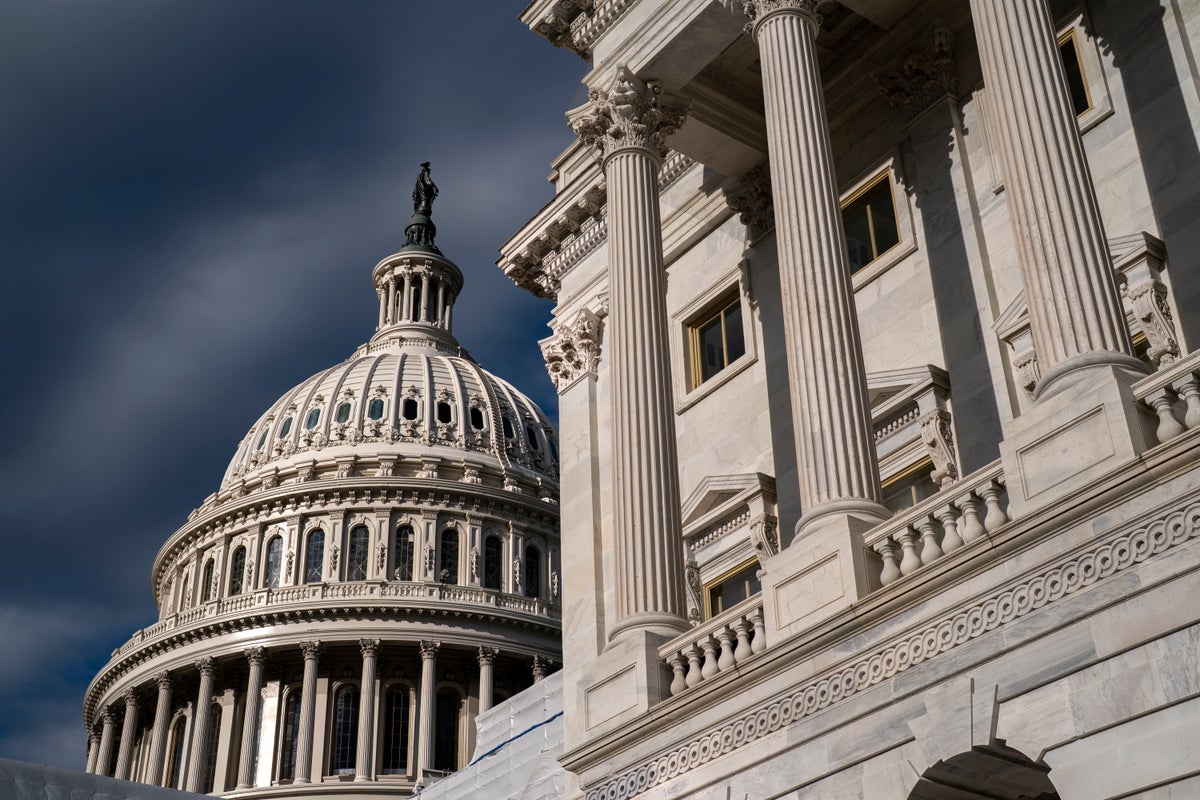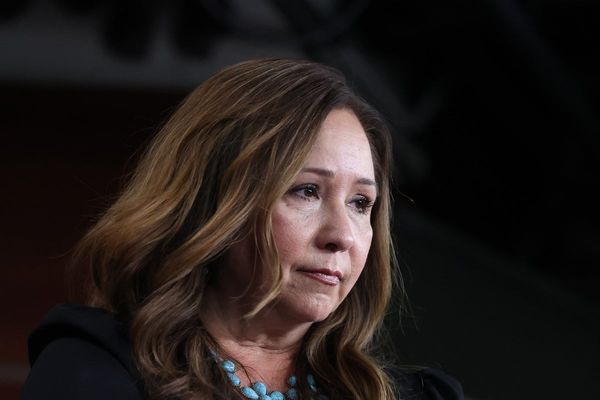
President Joe Biden is meeting with top congressional leaders at the White House on Tuesday in the hope of averting the onset of a partial government shutdown at the end of the week.
Unless a new spending bill can be agreed before Friday 1 March, funding for the departments of agriculture, energy, house and urban development, transportation and veterans affairs will expire.
What’s more, the departments of justice, state and defence will in turn find themselves without cash from Friday 8 March.
Senate majority leader Chuck Schumer has already set the tone for what threatens to be an ill-tempered encounter by writing in a letter to colleagues on Sunday: “We are mere days away from a partial government shutdown on 1 March. Unless Republicans get serious, the extreme Republican shutdown will endanger our economy, raise costs, lower safety, and exact untold pain on the American people.”
Senator Schumer complained that a first draft of funding bills was due to be made available for review before the weekend, fuming that it had not happened and saying: “It is clear now that House Republicans need more time to sort themselves out.”
Responding angrily, the Republican speaker of the House of Representatives, Mike Johnson, accused the Democrat of engaging in “petty politics”.
“Despite the counter-productive rhetoric in Leader Schumer’s letter, the House has worked non-stop, and is continuing to work in good faith, to reach agreement with the Senate on compromise government funding bills in advance of the deadline,” Mr Johnson said in a statement.
“At a time of divided government, Senate Democrats are attempting at this late stage to spend on priorities that are farther left than what their chamber agreed upon.”
While senators returned to Congress on Monday after a brief recess, their House counterparts are not due back at their posts until Wednesday evening, placing even further time-pressure on the passage of any funding bills and increasing the likelihood of another stop-gap spending motion or continuing resolution (CR) becoming necessary.
The prospect of having to sign off on a fresh CR represents a potential problem for Speaker Johnson, who took up the gavel with a pledge to oppose such temporary accommodations and prioritise long-term funding deals and substantial policy reforms instead, wary of repeating the compromises that led to the ousting of his predecessor Kevin McCarthy by a fractious caucus last October.
In addition to averting a shutdown, Mr Schumer, Mr Johnson and minority leaders Mitch McConnell and Hakeem Jeffries will also be required to focus on passing a fresh national security package, including critical military aid for allies Ukraine, Israel and Taiwan.
The Senate passed a $95bn bill on that subject two weeks ago but it was not brought to the floor of the House before its members embarked on a two-week vacation, despite the geopolitical urgency of a deal being reached, with Republicans continuing to argue that addressing the crisis of illegal immigration at America’s southern border was more crucial than foreign aid.
Here’s a look at some of the key questions surrounding government shutdowns, a recurrent threat looming over Congress whenever the parties of the left and right cannot find common ground on how to bankroll the great offices of state.
What is a government shutdown?
Under the Antideficiency Act, which was passed in 1884 and amended in 1950, US government departments and federal agencies cannot spend or commit money without the approval of Congress.
Its authority was reinforced in 1980 when Jimmy Carter’s attorney general Benjamin Civiletti ruled that its word was gospel and that no funding agreement meant no spending, leaving no further room for interpretation.
The House and Senate therefore need to assess the budget requests submitted by individual departments and agencies and agree on the 12 appropriation bills that apportion a full year’s worth of funding to those offices before a given deadline, with the spending packages having to pass through both chambers before they can reach the Resolute Desk to be signed off by President Biden.
If Congress passes the appropriation bills, the clock is reset for another year and everyone can rest easily.
If it cannot, those departments and agencies affected must cease all non-essential functions until a deal is in place.
If all of the dozen bills are caught up in partisan squabbling, a complete government shutdown takes place.
But if some can be agreed to, leaving only a few offices required to close their doors, a partial shutdown is the result.
What happens if the government has to shut down?
During federal shutdowns, government employees are told not to report for work and placed on furlough – although, since 2019, they are now paid retroactively when the impasse comes to an end, rather than forced to lose out on wages altogether.
The state of play does not apply to those whose jobs are considered essential for public safety, such as law enforcement officers, soldiers, air traffic controllers, medical personnel, power grid technicians or those responsible for administering social security, Medicare and Medicaid payments.
In 1981, Mr Civiletti ruled that a president should be free to go about his or her constitutional duties even if a shutdown is ongoing, an argument that has since been extended to court employees, members of Congress and aides who support them in their essential activities.
The bureaucratic consequences of such an outage can be considerable, however, particularly if the shutdown lasts for a significant length of time, with applications for passports, driving licences, student loans and tax refunds going unprocessed, food assistance programmes paused, inspections neglected and national parks closed.
But the state is prepared for just such an eventuality and the White House Office of Management and Budget posts detailed contingency plans for agencies to follow in the event of a shutdown and a 51-page question-and-answer guide to protocol, micromanaging the situation and stipulating which buildings must turn off their lights and computers.
How common are they in Washington?
While shutdowns can theoretically happen in any country that has a federal system of government rather than a parliamentary one, it typically only occurs in dramatic cases of revolution, invasion or other disaster and remains a peculiarly American problem.
This is because it is only really in Washington that the two chambers of Congress can be controlled by political parties other than that of the president, intended as a safeguard against authoritarianism.
There have been at least 10 shutdowns in DC in the last 40 years, although only four of those were of any real length.
Bill Clinton’s bitter battles with a GOP-dominated House and Senate in 1995 and 1996 yielded two, meaning 26 days were lost in total as a result of feuding.
Barack Obama suffered another in 2013 when a stand-off over his Affordable Care Act resulted in a 16-day outage.
Then another erupted under Donald Trump from 21 December 2018 to 25 January 2019 over funding his (still far from complete) wall at the southern border, a 35-day partial shutdown in which five of the 12 appropriation bills were passed, allowing some agencies to remain open.
As for how significant all of this is for the US economy, according to one Goldman Sachs estimate a shutdown typically eats into America’s gross domestic product by 0.2 per cent for each week it lasts.
In the case of the Trump-era shutdown, the Congressional Budget Officecalculated that it cost the cost the economy 0.1 per cent growth in the fourth quarter of 2018 (or around $3bn) and 0.2 per cent growth in the first quarter of 2019 (or $8bn).







